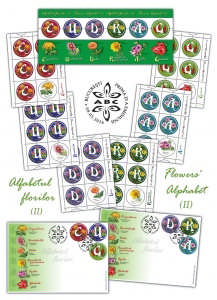 March 8 brings each year one of the most awaited spring celebrations – International Women’s Day, a symbolic testimony of respect, appreciation and love for the female representatives. Although the feast has had various interpretations depending on the region where it is celebrated, its overall significance refers to the economic, political and social achievements obtained by women over time. However, the current version of the International Women’s Day was adopted in 1977, when the United Nations General Assembly proclaimed the day of March 8 as the United Nations Day for Women’s Rights and International Peace, thus marking the beginning of a tradition in many countries in Europe and the United States.
March 8 brings each year one of the most awaited spring celebrations – International Women’s Day, a symbolic testimony of respect, appreciation and love for the female representatives. Although the feast has had various interpretations depending on the region where it is celebrated, its overall significance refers to the economic, political and social achievements obtained by women over time. However, the current version of the International Women’s Day was adopted in 1977, when the United Nations General Assembly proclaimed the day of March 8 as the United Nations Day for Women’s Rights and International Peace, thus marking the beginning of a tradition in many countries in Europe and the United States.
In celebrating International Women’s Day, Romfilatelia invites the general public to a symbolic manifesto for women everywhere and dedicates to all the ladies a philatelic bouquet of flowers, found in the latest postage stamp issue called Flowers’ Alphabet (II) CU DRAG (With Love). The issue can be purchased starting with Tuesday, March 8th, 2016, in Romfilatelia’s stores in Bucharest, Bacau, Brasov, Cluj-Napoca, Iasi and Timisoara.
Each of this project’s stamps depicts a head letter intertwined with a flower, the entire issue forming the words “CU DRAG” (With Love). Likewise, the issue completes the one in 2015, with a similar title, where the postage stamps have formed, in the same manner of expression, the word “TIMBRE” (Stamps).
The expression “CU DRAG” (With Love) is formed by the six stamps of the issue, each letter being the initial of the flower illustrated on the respective stamp, as follows:
- The stamp with the face value of lei 1.20 presents the letter C of Chrysanthemum, also called autumn daisy. Chrysanthemums belong to the genus Chrysanthemum, featuring over
30 species of perennials, whose flowers range in shape and colours, thus separating the spontaneous species from the cultivated ones.
- On the stamp with the face value of lei 1.40 is represented the letter U of “Urechelnita” (the common houseleek) whose name does not betray the beauty and utility of the plant. It grows among the European spontaneous flora, but is also widely cultivated for its ornamental and curative nature.
- The letter D is reproduced on the stamp with the face value of lei 1.60 and refers to Dahlia, a plant whose genus includes over 15 species of perennials and is native to Central and North America. The name of the plant comes from the Swedish botanist Anders Dahl, who brought the plant from America, its cultivation in Europe beginning in the Royal Gardens of Madrid.
- The stamp with the face value of lei 4.50 illustrates the letter R of “Ruscuta de primavara” (yellow pheasant’s eye), species growing in Europe and Asia, being considered poisonous, but with curative properties for heart disease.
- The letter A is represented on the stamp with the face value of lei 8.00 and refers to Azalea, a plant which is actually a group of shrubs and attracts by both size and composition of the flower, and also by its vivid colour tones and shades from dark red or purple to pink and white.
- The stamp with the face value of lei 16.00 illustrates the letter G of Gladiola, plant whose genus Gladiolus contains over 250 species spread throughout Asia, Europe and South Africa. Gladiolas are related to irises, both having an elongated shaft sharpen toward the peak, in the form of a sword, feature found also in the plant’s name deriving from the Latin word for sword, gladius.
The six stamps of the issue Flowers’ Alphabet (II) CU DRAG (With Love) are completed by two first day covers, and as page composition were used the sheet of 28 stamps, the minisheet of 5 stamps +
1 label and the block of 6 stamps + 6 TABS.
Romfilatelia thanks the Romanian Academy Institute of Biology for the documentary support granted in the creation of this postage stamp issue.
* * *
A stamp ennobles the communication by itself; it shares emotions, compresses distances and creates connections; it gathers on its miniature surface “huge” stories about human and material values, including them successfully within the Romanian heritage; A stamp is transformed in time, redefining its role according to the society’s current facts: from an advocate of noble causes and a friend of influential Romanian personalities to a leading messenger of the most important events, or simply, a genuine ambassador of our country and the Romanian people. Do not forget to search for and discover the excitement of a world gathered on the Romanian stamps!
For further information, please contact the Public Relation Office:
Tel: 021 / 337 24 42
anamaria.anton@romfilatelia.ro



